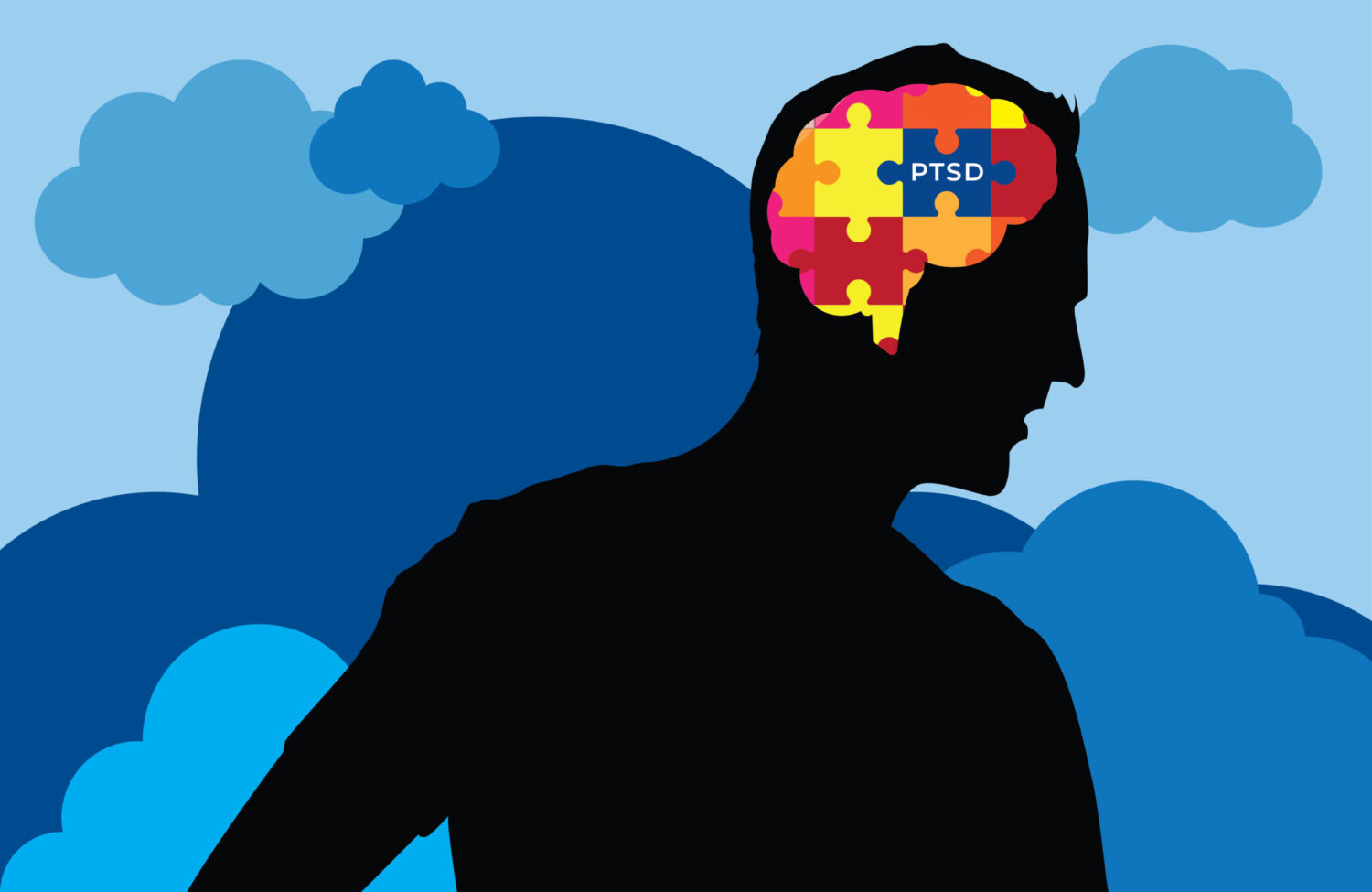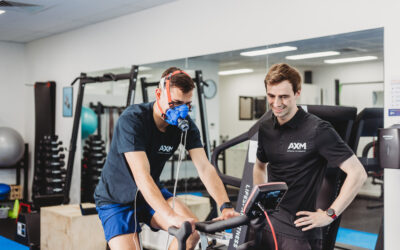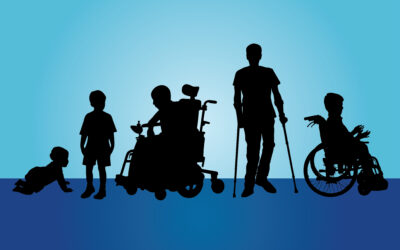What exactly is PTSD?
According to both the Black Dog Institute and Beyond Blue, Post-traumatic stress disorder is a group of stress reactions that can develop in people who have been through OR witnessed a traumatic event1,2. These events could include, but are not limited to, things such as warfare, acts of violence, accidents, life threatening illness, child birth, physical or sexual assault or abuse. Whilst most people who experience these events have no problem afterward, a small percentage develop PTSD and this is often associated with the duration and severity of the trauma. People living with PTSD may experience feelings of intense fear, helplessness, horror or anger and feel anxious and highly vigilant, having intrusive thoughts and memories of the trauma3.
After exposure to life-threatening events, there is often chemical and neuronal changes in the brain including dysregulation of the stress response system and it can happen to anyone, at any age, following the event4. Even when a person living with PTSD is safe, they may feel a heightened sense of danger leading to intense stress and fear caused by an alteration in the natural flight-or-fight response. A person living with PTSD may experience four main types of difficulties1;
- Re-living the traumatic event
- Being overly alert or wound up
- Avoiding reminders of the event
- Feeling emotionally numb
It is not uncommon for these individuals to also experience other mental health problems at the same time such as depression, anxiety and alcohol or substance use.
In addition to the adverse impact on an individual’s mental health and wellbeing, people with PTSD have a high prevalence of physical comorbidity including obesity, diabetes and metabolic syndrome, contributing to premature mortality5. Compared with matched general population controls, people with PTSD had an almost doubled risk of metabolic syndrome5. The reasons are multifactorial yet include high rates of smoking, poor sleep behaviours and low levels of physical activity compared to the general population5.
The Facts2,5,6,7
- Around 12% of Australians will experience PTSD in their lifetime.
- About 20% of people who are exposed to traumatic events develop PTSD.
- Serious accidents are one of the leading causes of PTSD in Australia.
- 8 million adults have PTSD in any given year.
- The prevalence of PTSD in women during their lifespan is at least 10%. For men, the prevalence of PTSD is 5% during their lifetime. Simply stated, women are twice as likely as men to develop PTSD.
- People with PTSD are four times as likely to have type 2 diabetes and rates of overweight and obesity are as high as 92%
Myths vs reality6,8
- Myth: everyone with PTSD has been through a dangerous event
Reality: Not everyone living with PTSD has experienced direct trauma. Some people develop PTSD after a family or friend experiences trauma. The death of a loved one can also lead to PTSD.
- Myth: time heals all wounds
Reality: PTSD can take years to develop. Childhood trauma may still affect adults, many years after the traumatic event happened. People with PTSD need professional support and care.
- Myth: Trauma lasts forever and is incurable.
Reality: The human brain strives for equilibrium. Our bodies are designed to heal over time. Society is beginning to understand what trauma means, and we are learning how to support each other through distress and make sustainable changes.
- Myth: Only soldiers get PTSD
Reality: While war veterans are at a higher risk of PTSD than the general population, PTSD can affect anybody who has been through a traumatic event.
- Myth: people living with PTSD are weak and need to get over it
Reality: people living with PTSD live with a mental illness. They cannot ‘snap out of it’ without treatment. Their behaviour is a function of illness, not weakness.
- Myth: Strong people can deal with trauma on their own and don’t need help.
Reality: PTSD and other trauma reactions have nothing to do with mental strength, character or background. The truth is that ANYONE can experience a trauma reaction after a terrifying incident because the human brain has set ways of understanding and responding to threats.
Why utilise exercise as a treatment for PTSD?
Whether you live with PTSD or not, we all know that regular exercise has a number of health benefits. Some of these benefits include improved cardiovascular health, weight loss, improved sleep quality, reduced feelings of anxiety and depression and protection against many chronic diseases. In conjunction with other treatments, given the benefits of exercise as well as the numerous physical and mental health problems experienced by people with PTSD, regular exercise as a therapy will have a number of advantages. For people with PTSD, evidence suggests exercise seeks to reduce symptoms of depression, anxiety and stress, decrease social isolation, improve sleep quality, increase self-esteem and improve quality of life9. Exercise stimulates the production of endorphins, that can elevate moods and potentially temper the epinephrine (flight-or-fight) response whilst also making you feel stronger and more in control10.
Several studies have looked at the effect of a regular exercise program on PTSD symptoms. One study showed that in adults with PTSD, a 12-week exercise program that included three 30-minute resistance training sessions a week, as well as walking, was found to lead to a significant decrease in PTSD symptoms, depression, and better sleep quality after the program ended10. Another review of literature suggested that aerobic exercise may also reduce PTSD symptomatology across a variety of populations providing evidence for the clinical utility of exercise as a form of treatment11. It is suggested that more studies should be done on this relationship as it is concluded that including physical activity in the treatment of PTSD appears to be helpful11. Although research is still clearly in its infancy, the findings that physical activity can improve PTSD and depressive symptoms is encouraging and adds further support to the notion that physical activity has an important role in the multidisciplinary team management of people with PTSD9.
What type of exercise and how much to do?
As mentioned above, numerous types of exercise such as aerobic, strength/resistance and mindful based exercises can be beneficial for those living with PTSD. There is no “best-type” of exercise for PTSD. It is important to find something you like and will get the most enjoyment out of. This means you will stay engaged and be more motivated to continue to engage in exercise. At the end of the day, it comes down to what you want to achieve and what goals you would like to reach.
Depending on your exercise history and your goals will depend on how much exercise you should be doing. Remember, some exercise is better than no exercise! A great place to begin is with the World Health Organisation Exercise Guidelines12 which state adults aged 16-64 years should:
- Accumulate at least 150 minutes of moderate-intensity physical activity throughout the week, or do at least 75 minutes of vigorous-intensity physical activity throughout the week.
- Do muscle-strengthening activities involving major muscle groups on 2 or more days per week.
Seeking help
If you’re experiencing symptoms of PTSD, understand that you’re not alone. It is important to know that you don’t need to have a serious condition or go through a traumatic event to develop PTSD. Everyone handles situation’s and stresses in life differently. With the correct treatment, people living with PTSD can make a full recovery. If you or someone you know is living with PTSD and wants some help to start exercising, contact your local Accredited Exercise Physiologist at AXM Exercise physiology. They will help with goal setting and will prescribe exercises that are safe and tailored to your individual needs.








